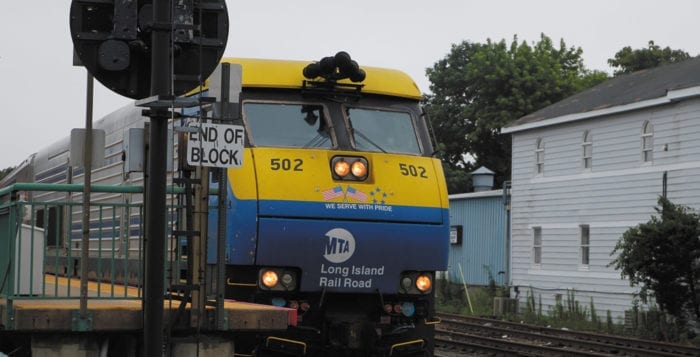Most passengers on the Long Island Rail Road probably have one wish — to get to their destination quicker. This desire has been uttered for decades on the Port Jefferson line where commuters headed to the Big Apple or Nassau County need to change trains since tracks are only electrified west of Huntington, with diesel fuel powering all trains east.
While we’re more optimistic than ever that the wish may be granted, we must admit we’re only cautiously optimistic.
While the Long Island trains may never reach speeds of those in Japan, China and France, which travel at more than 200 mph, officials and community members are working harder than ever toward the goal of electrification. Both the Metropolitan Transit Authority and state Sen. Ken LaValle (R-Port Jefferson) have appropriated funds to support a study of the feasibility of electrifying the line, and a group of community members, informally called the North Shore Business Alliance, is advocating for the study by not only lobbying elected officials, but also presenting the benefits to civic associations and chambers of commerce along Suffolk County’s North Shore. There are a lot of people on board to move things forward.
Electrifying the rails means more than getting in and out of the city quicker, it also means living on Long Island and community would be more appealing. Hopefully, it would keep people here and draw more to the area. It would make commuting to work in the city easier, where salaries tend to be higher and opportunities more abundant. For those traveling east, it would decrease the time for traveling to Stony Brook University.
However, as we have said before, we are cautiously optimistic. While the study will look at how much faster trains can go, it will also look to see if electrification makes sense financially, something we Long Islanders need to understand. The winding nature of the Port Jeff line presents a set of logistical troubles as well. There is still a possibility electrification may not make economic sense, which stands to reason as it has been discussed for generations. In 2000, one study estimated it would cost $500 million to electrify the Port Jefferson line from Huntington to the end.
There’s also a change some communities may not welcome as they may foresee problems that might arise from faster trains, one being that many towns may not want more people living in their areas, citing traffic problems and perhaps more multihouse units being constructed or development.
But back to the positive side of the coin, faster trains may actually mean less cars on the road especially on the Long Island Expressway and Northern State Parkway as more may find taking the train easier. There will also be those who now live on the North Shore who opt to take trains out of Ronkonkoma but now can head to the station closer to their home.
We may not know what the feasibility study will turn up but moving it forward will increase the odds of one day either riding a faster train or finally putting the dream to rest.





